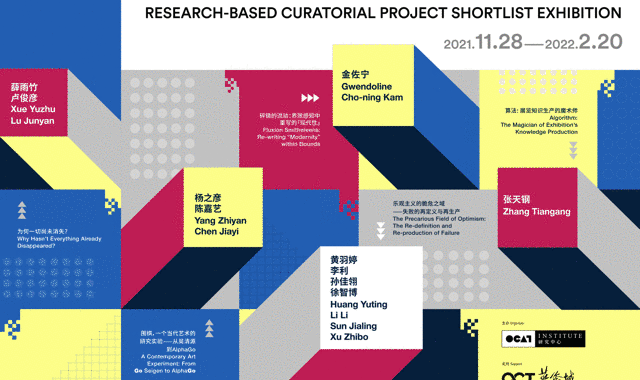
From November 28, 2021, to February 20, 2022, the OCAT Institute presents “2021 Research-based Curatorial Project: Shortlist Exhibition,” a public exhibition of the five shortlisted curatorial proposals of the “2021 Research-based Curatorial Project”.
The OCAT Institute’s Research-based Curatorial Project is an ongoing annual program with the aim of promoting the integration of exhibition curating and scholarly research. This project is to encourage curators to deepen the research and theoretical aspects of their curatorial project, while also encouraging art historians and critics to employ exhibitions as a method to expand their scholarly engagement.
As Wu Hung stated, “The Research-based Curatorial Project is therefore not merely a competition, but more importantly, presents an opportunity for emerging curators to continually adapt and develop their original proposals, to transform ideas into actual exhibits, and to produce an exhibition with both theoretical and visual appeal.” “2021 Research-based Curatorial Project” was launched on January 21, 2021, with a call for proposals, and by March 31, 2021, 29 proposals had been received in both English and Chinese.



Exhibition View
Submissions this year are refreshing in terms of comprehensiveness, depth, and breadth in research, mainly revolving around issues such as virtual reality, artificial intelligence, media and networks, art and technology, cities and dwellings, etc. Based on the purpose and mission of research-based exhibitions, the Committee takes the quality of research as the ultimate criterion when evaluating, shortlisting the five most promising proposals: Fluxion Smithereens: Re-writing “Modernity” within Bounds (curator: Gwendoline Cho-ning Kam), Why Hasn’t Everything Already Disappeared? (curators: Lu Junyan and Xue Yuzhu), The Precarious Field of Optimism: The Re-definition and Re-production of Failure (curators: Huang Yuting, Li Li, Sun Jialing, Xu Zhibo), A Contemporary Art Experiment: From Go Seigen to AlphaGo (curators: Yang Zhiyan, Chen Jiayi), Algorithm: The Magician of Exhibition’s Knowledge Production (curator: Zhang Tiangang).



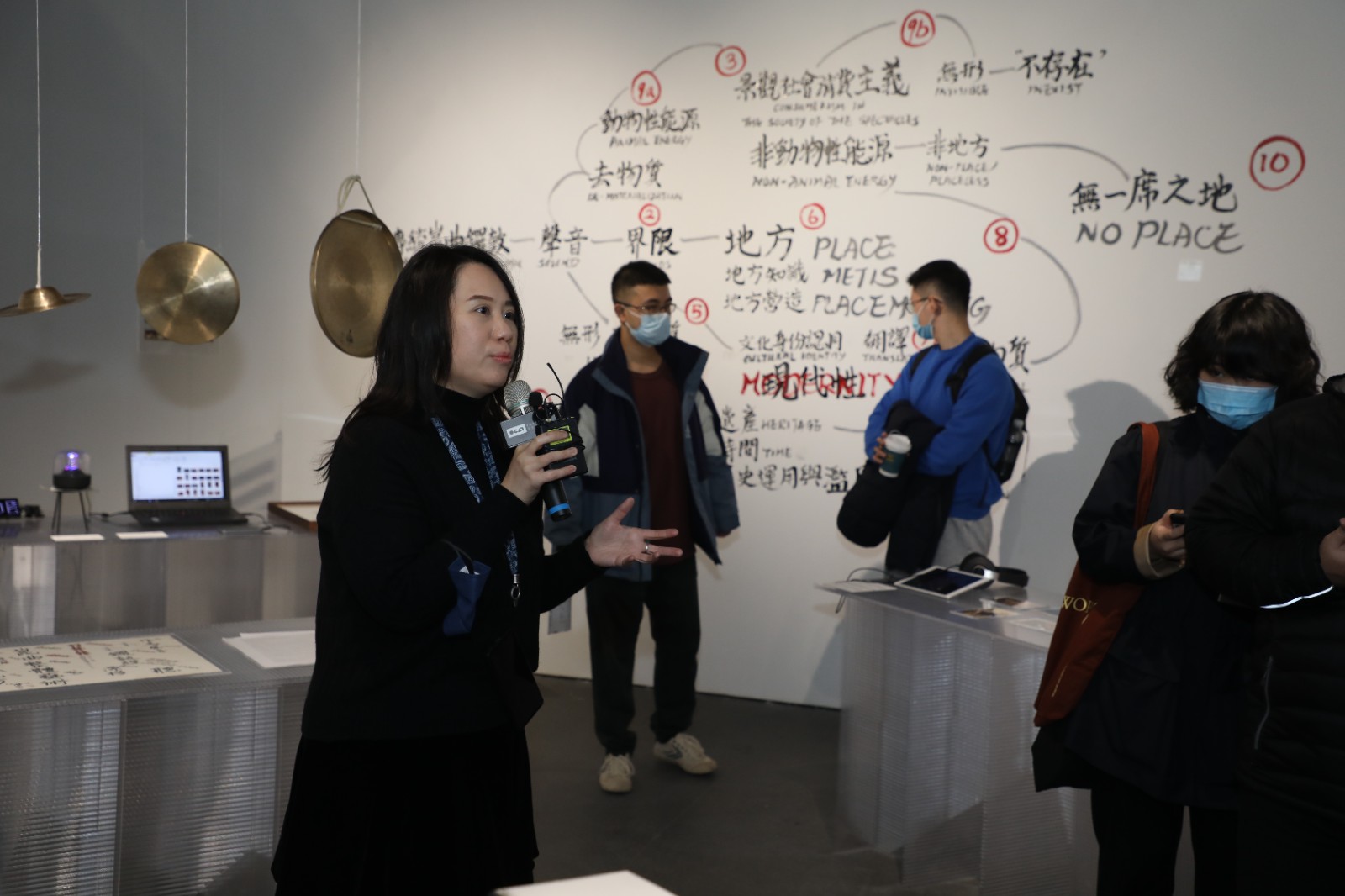
View of the Opening Ceremony
The curators of the five shortlisted proposals approach their research from different aspects.
Fluxion Smithereens: Re-writing “Modernity” within Bounds focuses on traditional Chinese performing arts that are now attempting to embrace “modernity” and “progress” by relying on the development of digital media, raising the question of whether traditional Chinese performing arts will generally become irreversibly “heritage-ized” when disconnected from their indigenousness and contemporary life.
Why Hasn’t Everything Already Disappeared? This begins with a reflection on VR (virtual reality) technology, seeking the cause of mass addiction to VR technology, and dives deep into the bounds between simulacra and reality. By metaphors expressed by the exhibited artworks, it discusses the new social order of the future when reality is absent.
The Precarious Field of Optimism: The Re-definition and Re-production of Failure takes “failure” and “space” as two interacting ideas to consider ways in which by redefining “failure,” “failure” can be regarded as productivity to reshape the existing spatial forms.
A Contemporary Art Experiment: From Go Seigen to AlphaGo aims at the Game of Go—one of the four accomplishments for the literati and gentile women in China—to explore how Go, as an “old medium” as well as an Arriere-Garde culture, is capable of surpassing its attributes as a game, demonstrating more diverse possibilities in the process of merging cultural practice and art creation into a contemporary context.
Algorithm: The Magician of Exhibition’s Knowledge Production tries to interrogate the bounds of artificial intelligence. Apart from sorting out the research and practices of algorithm curation, it also builds an experimental platform to explore the possibilities of future exhibitions by employing the use of an algorithm as a tool.
The curators of the shortlisted proposals all keenly capture the undercurrent of the rapid development of contemporary society, science, and technology, either by expressing their reflections or boldly putting forward experimental schemes, which display their profound thinking in their research areas. During the preparation of the shortlist exhibition, five groups of curators have modified their original proposals. The exhibition itself also provides an opportunity for them to continuously deepen and further their projects through communication and interactions with the audiences. Hopefully, this process offers more empathy with the audience.
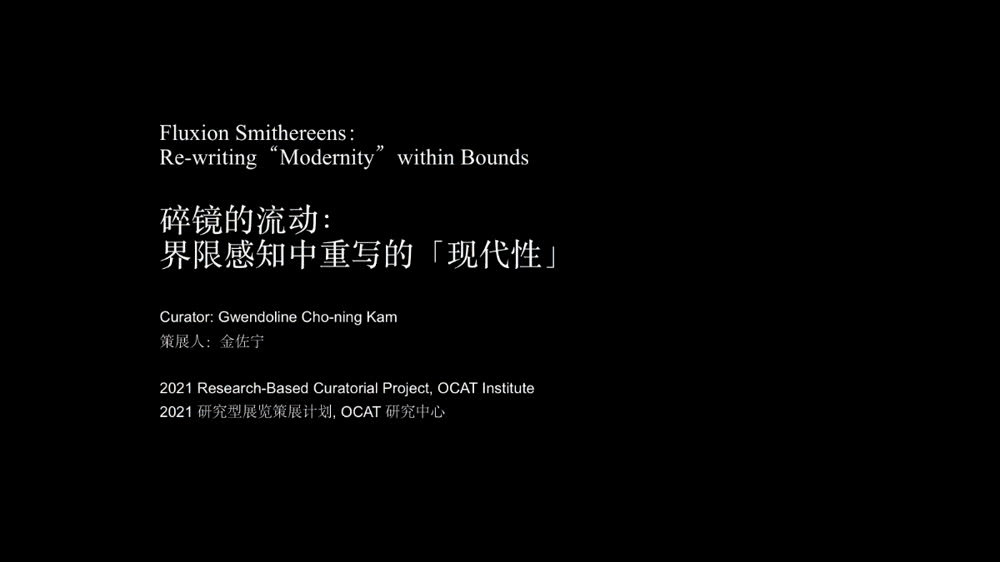
Fluxion Smithereens: Re-writing “Modernity” within Bounds
Curator: Gwendoline Cho-ning Kam
Unexpected and unprecedented, restricted mobility drives an inevitable local turn when pandemic health crisis puts the world off the globalized track during the second decade of the 21st century. Temporal-spatial re-orientation from all kinds of physical isolation has guided reviews towards globalization-caused cultural homogenization, reconnecting society to the exploration of “bounds” and “place,” where groups and individuals are identified.
“Place,” especially within the traditional Chinese performing arts context, faces conflicts and challenges initiated by new media technology, which overwhelms the world with possibilities that it creates via multi-time-space juxtapositions. The tremendous boost of dematerialization of culture during the pandemic period, however, further downplays the contribution that multidimensional interactions on the spot make communications of individual understandings, collective memory, and thus a cultural formation. The weakened bonds among body, culture and place in the digital era fail traditional Chinese performing arts as a place-making process, shifting it the subjective and unidirectional from “place” to “non-place,” which revolves around on-the-go consumption of super modernity.

 Exhibition View of Fluxion Smithereens: Re-writing “Modernity”
Exhibition View of Fluxion Smithereens: Re-writing “Modernity”
When “place” attaches the prefix “non-,” the process reveals how the culture of the senses, language, and social relations are constantly being de- and/or re-constructed over time. Within the domain of “non-place,” heritagized traditional Chinese artforms that are in search of western modernity seem to have found possibilities to achieve “progress” and “eternity.” The assumption of the linear of historical time underlies the desperation for progress, while also demonstrating the incapability to legitimize the beyond-time-space modernity of tradition in bridging the past and present. The infatuation of historical identity and resentment of melancholia in heritagization for a yet-to-lose tradition may account for the nostalgia consumption of now, which in turn leads to the de-contextualization and cultural amnesia of tradition.
Time anxiety mirrored in heritagization is not exclusive to traditional culture but to anything which competes or even exists and is defined by consumerism. In resisting the temporal passage, time anxiety urges the eternal quest for authenticity and considers digitalization an ultimate way for information storage and retrieval of the memory. There can be a presence, however, that the technology cannot document, just as with the “clear mirror” regarded by Dōgen Zenji of the 13th century, where the mirror cannot reflect but breaks everything into smithereens.
Taking metis as a “clear mirror,” this exhibition attempts to delineate how the notion serves as a passage to “work through” the past and present while questioning the inclination for new media technology in the post-pandemic era. Through the manipulation of a universal, decentralized exhibition setting, Fluxion Smithereens: Re-Writing “Modernity” within Bounds aims to demonstrate an open discussion initiated by the sound of luogu (gongs and drum) from traditional Chinese kunqu theatre, with the demonstration of 10 pieces of contemporary artworks created by 8 local artists. With the help of a handwritten mind map, the exhibition then sways into the exploration of how “modernity” should be rewritten in the bounds of place/non-place, intangible/immaterial, and animal/non-animal energy, proposing a felicitous and sustainable place for tradition in contemporary society.
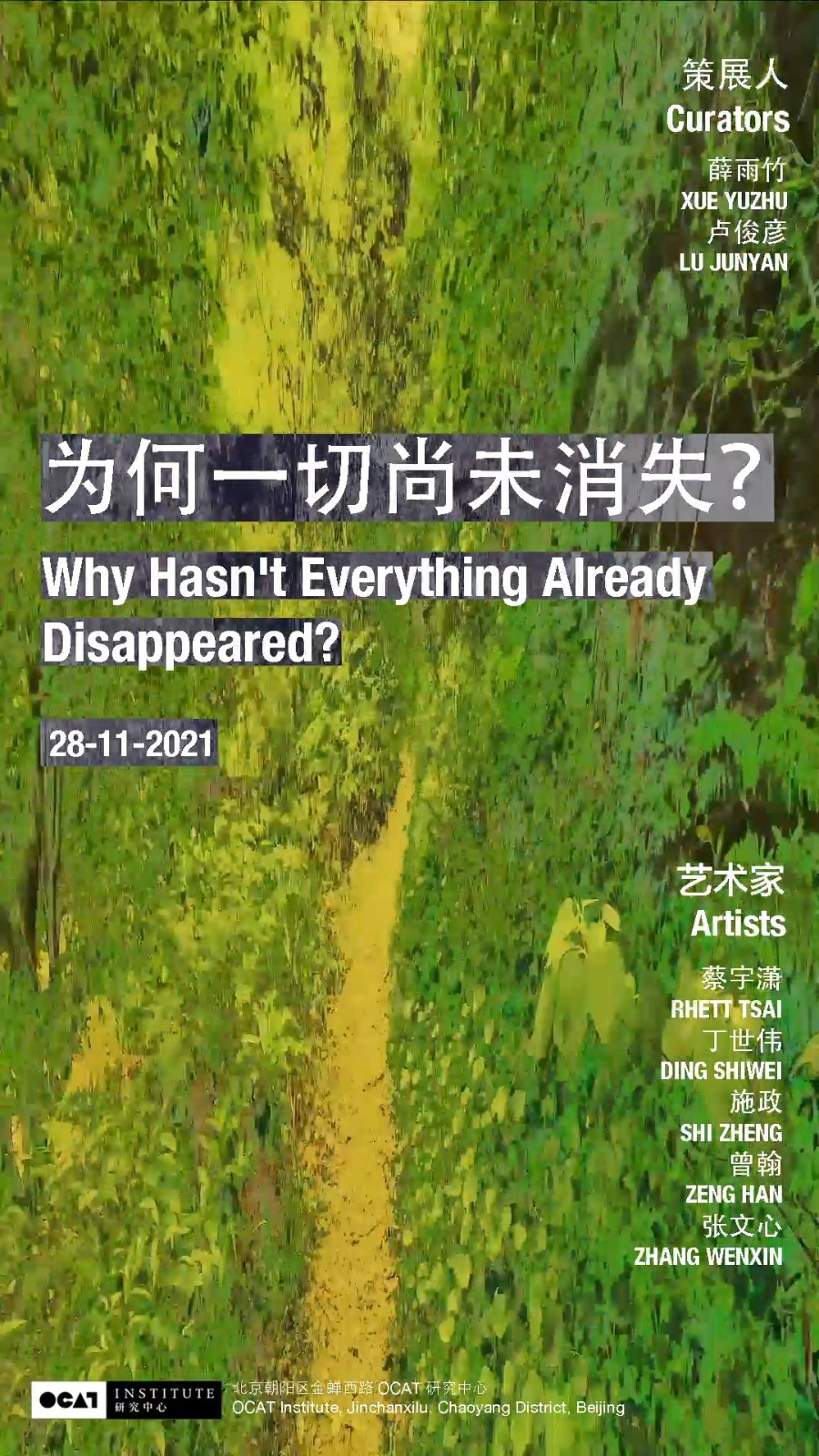
Why Hasn’t Everything Already Disappeared?
Curators: Xue Yuzhu, Lu Junyan
The title of the exhibition is taken from the French philosopher Jean Baudrillard’s essay Why Hasn’t Everything Already Disappeared? In his theory of simulacra, with the blossom of VR (virtual reality) technology, marked by the excessive prosperity of images, people enter the third of the three orders of simulacra —simulation. The simulacra generated by digital technology constructs new beings, while the boundary between simulacra and reality "implodes" and becomes "hyperreality." By presenting six works by five artists, Shi Zheng, Zhang Wenxin, Rhett Tsai, Ding Shiwei, Zeng Han, the exhibition, based on the theory of simulacra, aims to point out the anxiety and complexity that individuals and society are experiencing under the growth of VR technology.
 Exhibition View of Why Hasn't Everything Already Disappeared?
Exhibition View of Why Hasn't Everything Already Disappeared?
The exhibition consists of three parts. The first part, "Do Androids Dream of Electric Sheep?" whose title is taken from the book of the same name, is about the blurring boundary between the real and simulacra. The second part, "Why So Obsessed?" is trying to explore the reason why we are so obsessed in the virtual world: the strong desire for watching brought by a developed information system, and the fear of physical death dissolved by the permanence of the virtual carrier where real life can be infinite. The third part, "Does It Need to be Real?" starts from the concept of real itself, which focuses on the new social order of the future world in which reality is absent. We not only try to construct an atlas of the virtual world with three progressive questions, but also to inspire more perspectives for viewing and thinking.
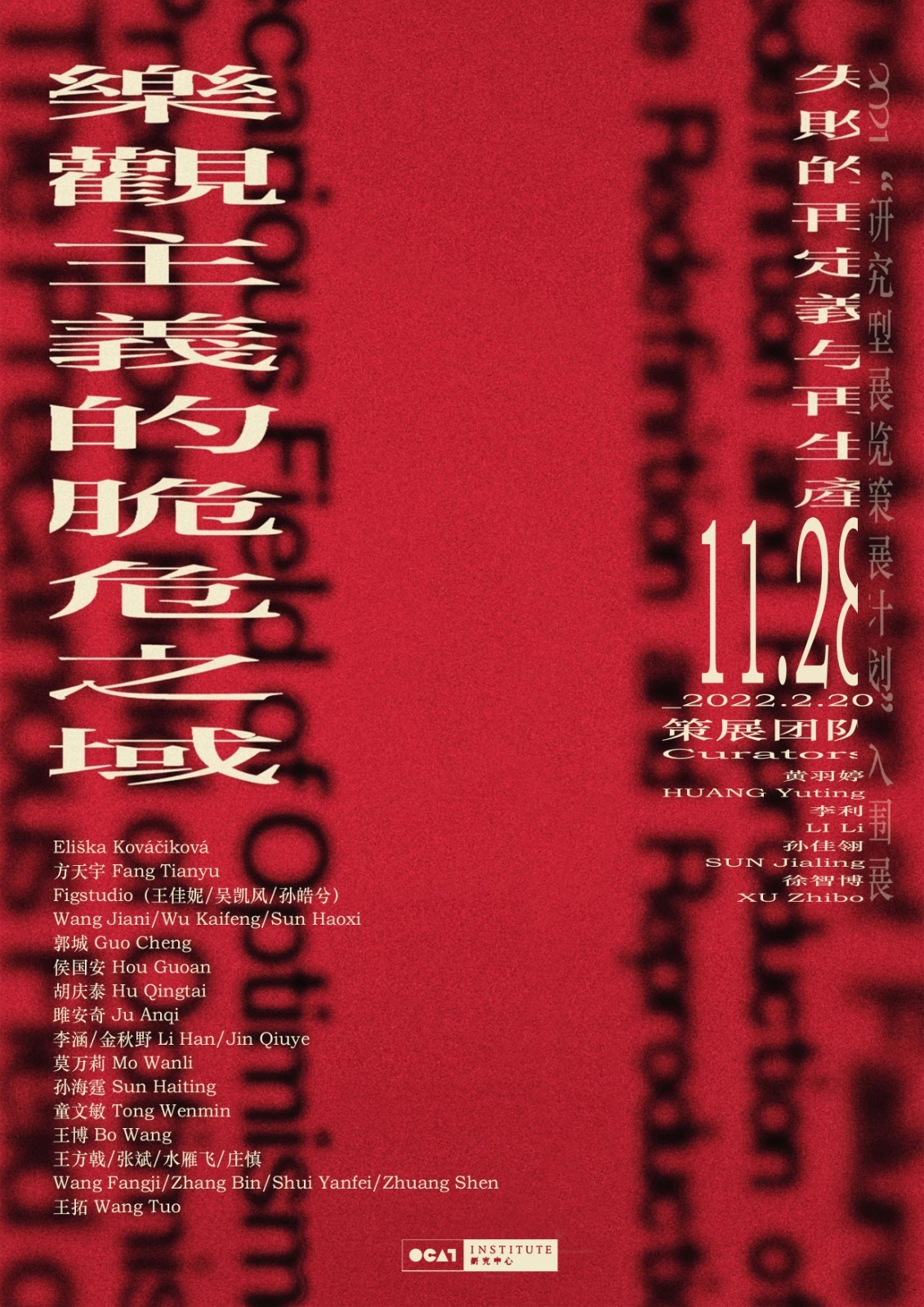
The Precarious Field of Optimism: The Re-definition and Re-production of Failure
Curators: Huang Yuting, Li Li, Sun Jialing, Xu Zhibo
Together in a self-driven “society of achievement,” we share an extreme thirst for positivity and implicit affective attachment to optimism. What remains hidden within such fantasies seems to be a sense of precariousness which has long been embedded in each subject’s personal and repetitive encounters with failure.
It is precisely the underlying interrelation between today’s urban space and the body of each individual, which should not be demarcated as the site of so-called Vita activa that our research-based curatorial project attempts to present. By mapping out the dual spatial concepts of both the exhibition space and the lived urban space, and employing the affect of a lens to re-frame failure, this project aims to develop the specific situation of the above-mentioned relations: on the one hand, to depict and study the space that is concluded as “failure;” on the other hand, to redefine the approaches that either individual or collective beings take in responding to the spatialized failure. By redefining and reproducing failure from the above aspects, we hope the precarious field of optimism, where the unexposed losses of optimism and the unexplored and unpraised productivity of defeatism can be relocated, could be thus found and staged.
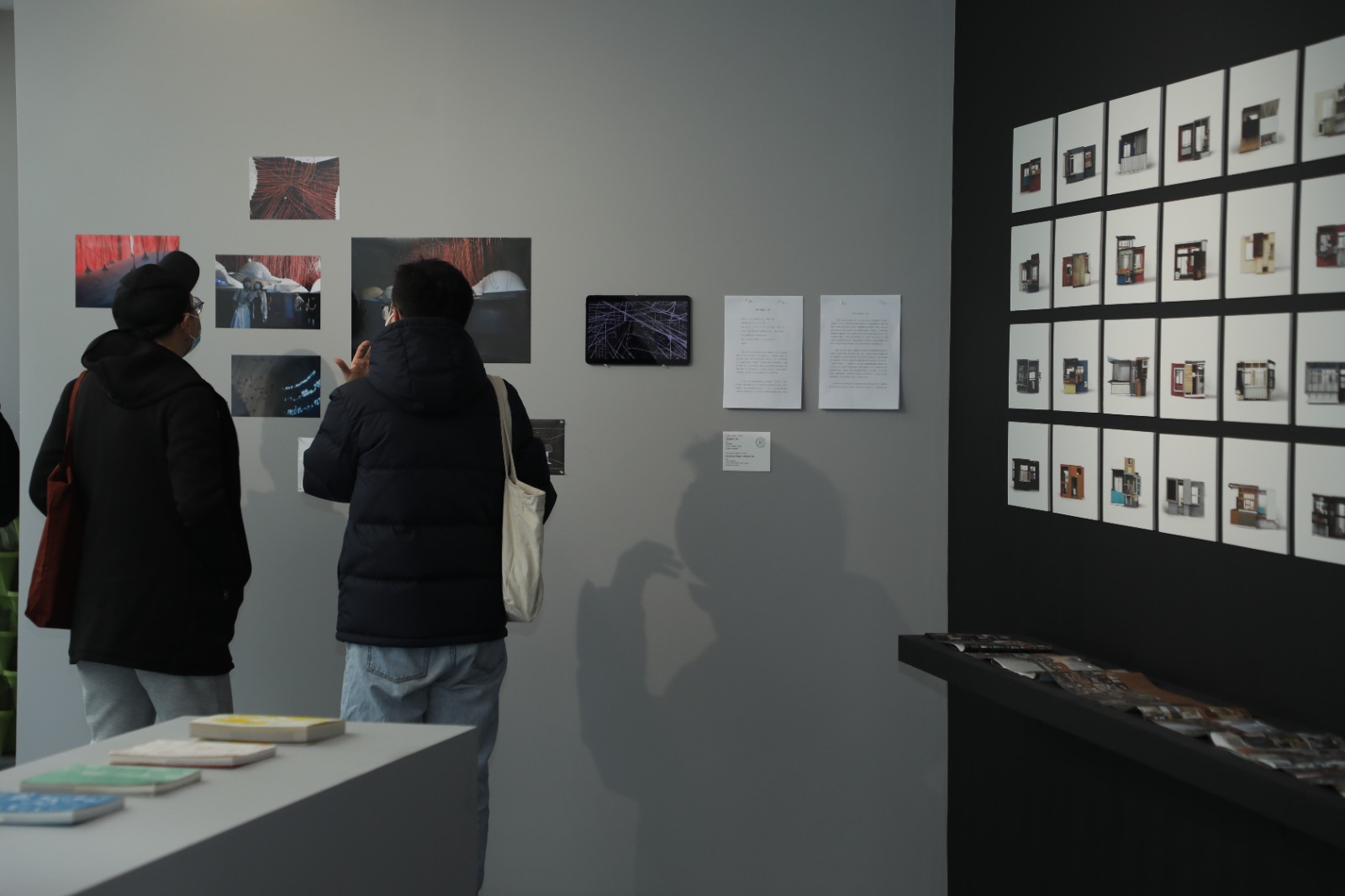
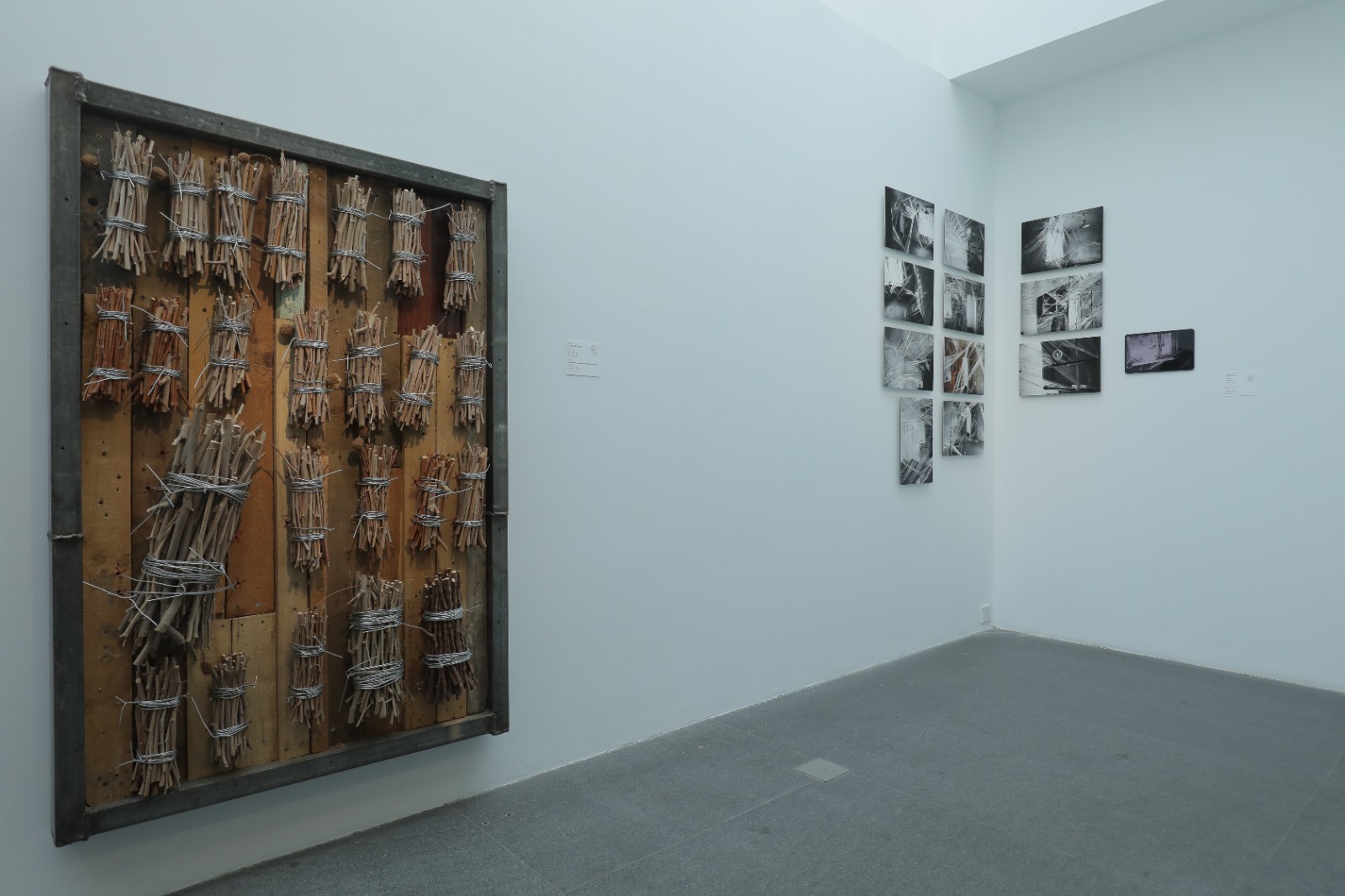

Exhibition View of The Precarious Field of Optimism: The Re-definition and Re-production of Failure
This project features “Landscape,” “Imagination” and “Action” as three interlocking sections. “Landscape” addresses the often neglected and discarded urban space where our sufferings can be unpacked and unfolded. In “Imagination,” selected artworks document and map out specific ways through which individuals or collective subjects return to question the former in a more critical and self-reflexive manner. At the level of “Action,” we discuss how the unseen and unspoken productivity of “failure can be invested in the reshaping of existing spatial forms.
In terms of the spatial design, the parallel sections are designed as three interacting cascades that flow along the extending exhibition space, intertwining the above-mentioned prevailed failed affective experience with the living urban conditions. Meanwhile, a number of protruding tentacles are positioned, in order to present “failure” as a positive affection that prompts the production and re-production of possible new spaces.
Through this layout, multiple dialogues between the different sections of artworks are thus formed, weaving our theoretical pathways, also prompting the audience to reconstruct failure in the evocation and deviation of experience. In this way, it is hoped that the dangers of the universal definition of “failure” can be prompted so that the audience will be able to rethink and re-engage with such a concept in plural terms.
To consider failure as a specific affective site for exploration, meditation and reflection, our curatorial project is an attempt to bring the act of the production of space into re-consideration both in the exhibition space and urban space.
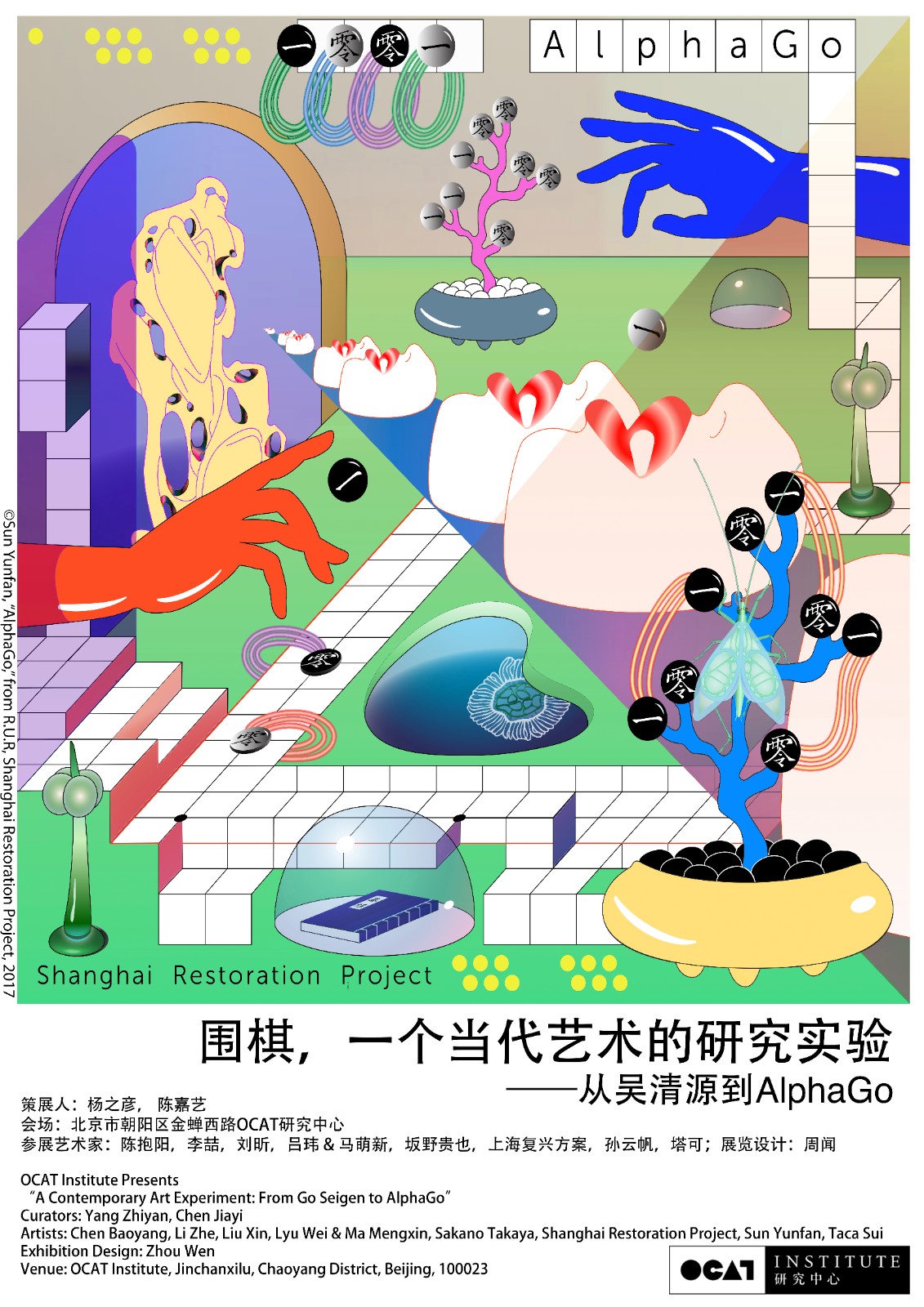
A Contemporary Art Experiment: From Go Seigen to AlphaGo
Curators: Yang Zhiyan, Chen Jiayi
Recent years have seen a popularization of video games and E-sports as a new cultural phenomenon, which has profoundly impacted on contemporary art practice and become a common theme in exhibitions. However, there is also a growing awareness that the seemingly edgy pairing between art and games has its own limits and even invites new forms of conservatism. Whether the artists who draw on specific game settings and aesthetics, or the game developers who try to incorporate typical artistic elements into games, have rarely been able to break out of the confines of their respective mediums.
By contrast, Weiqi, or the Game of Go, as an “old medium,” continues to demonstrate the possibility of merging art and gameplay experience. Minimal as the rules are, Go has almost infinite numbers of variations; it is both a traditional and contemporary game. Once considered one of the four accomplishments for the literati and gentile women in China, it served as the “l(fā)ast barrier” of human intelligence and a litmus test for the technological development of artificial intelligence, through which a whole new territory uncharted by any human player is revealed. From the case of the Grand Master Wu Qingyuan (also known as Go Seigen), who lived through the modernization of the game in the 20th century, to the story of AlphaGo, a history-making milestone in AI technology, Go has retained its appeal and relevance here and now despite being one of the oldest games in human history. Furthermore, it also creates a unique locus where different aspects of discourses and aesthetics can be discovered, from its language to temporal/spatial experience, from the rich material culture to its recent encounter with contemporary technology. We cannot help but ask what will become of Go, an Arriere-Garde (as opposed to Avant-Garde) culture, when it meets contemporary art?
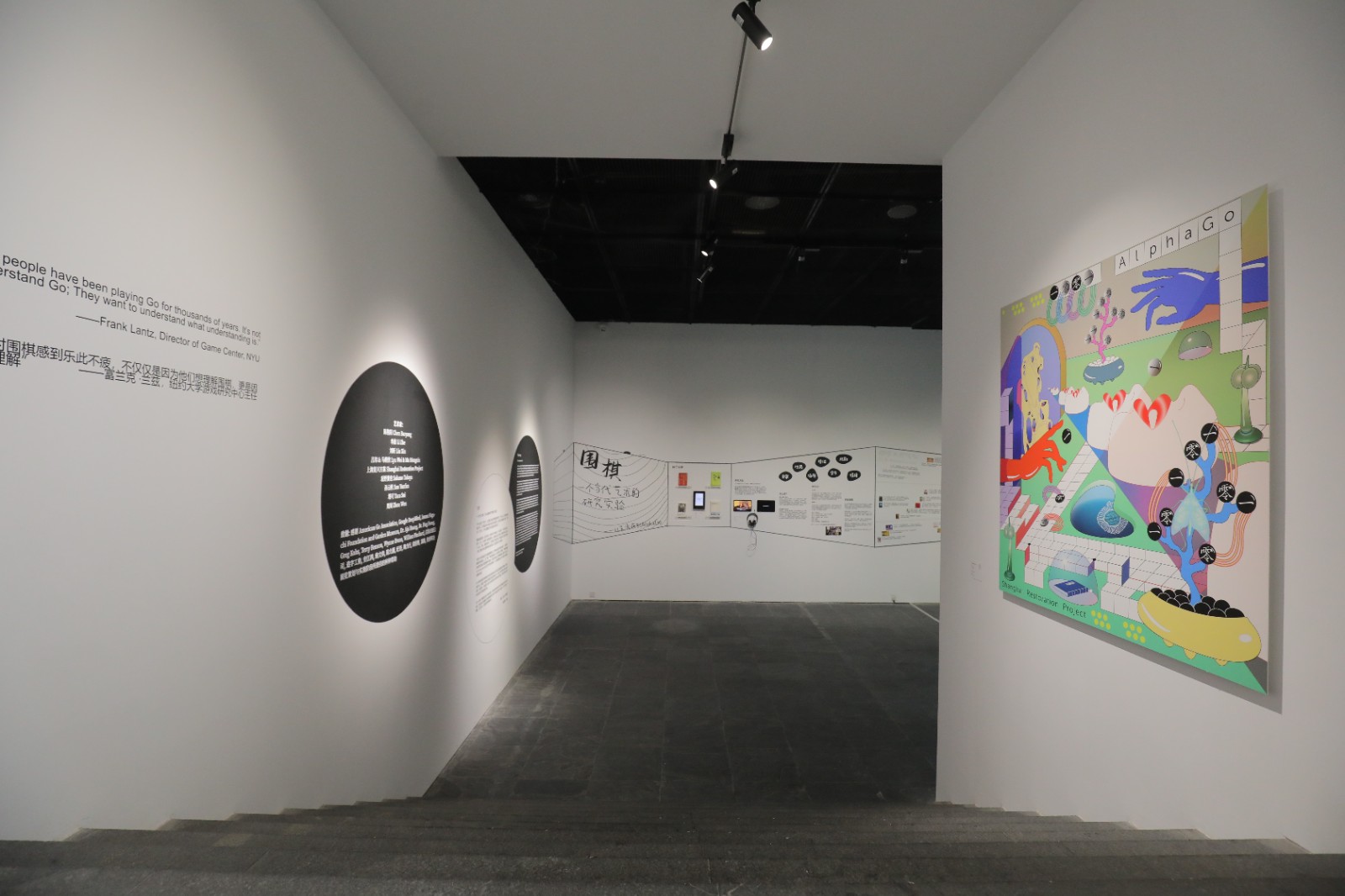
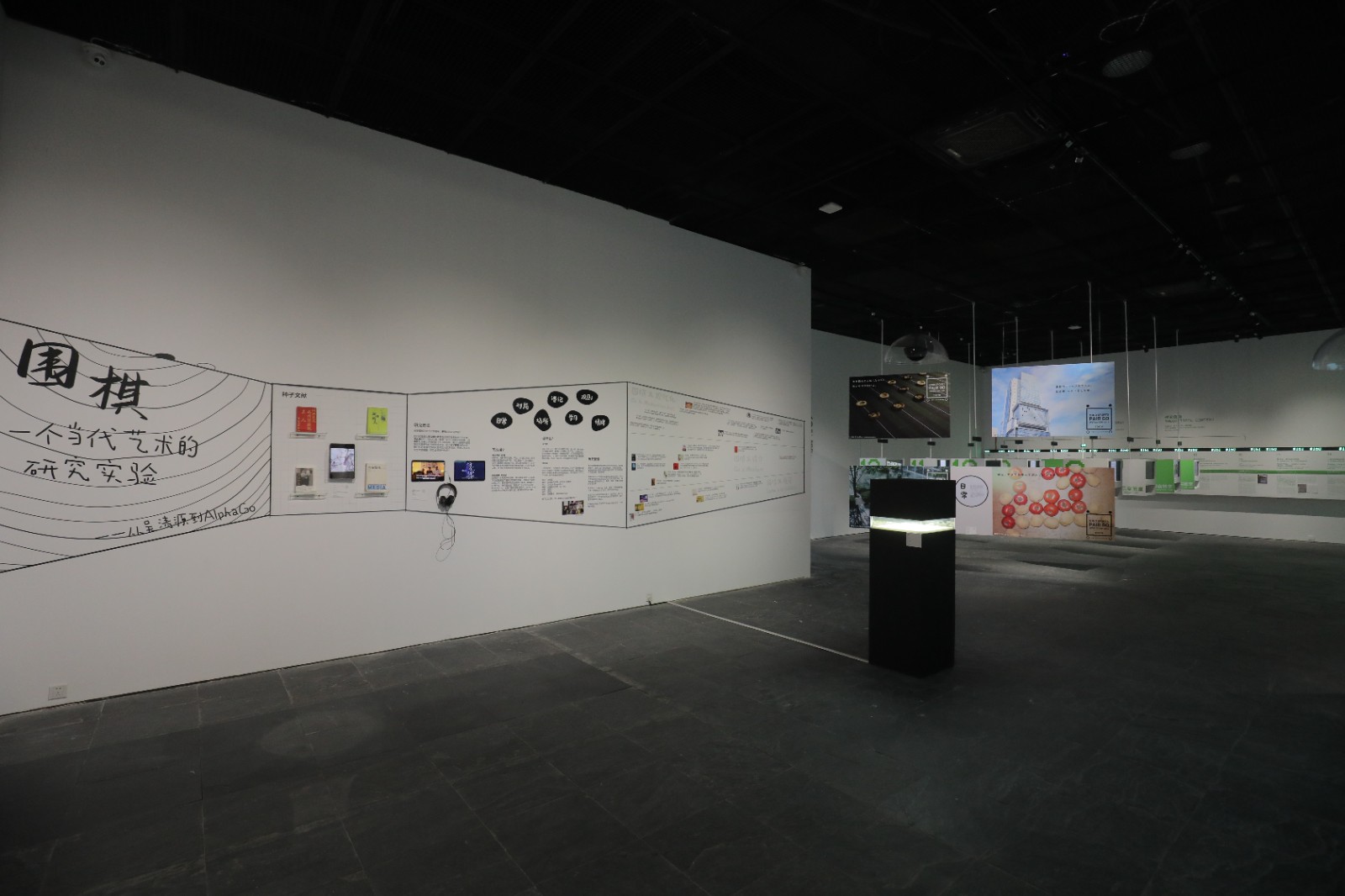 Exhibition View of A Contemporary Art Experiment: From Go Seigen to AlphaGo aims at the Game of Go
Exhibition View of A Contemporary Art Experiment: From Go Seigen to AlphaGo aims at the Game of Go
We are honored to be able to invite artists, designers, professional go players, musicians, and scholars to all join this adventure. The interdisciplinary research experimentation, we hope, can break the stereotype of Go as being highbrow, niche, and mysterious. Instead, we want to explore the rich and diverse cultural meanings of Go throughout the 20th century and its potential with or as contemporary art. Unlike other exhibitions, OCAT Research-based Exhibition provides a rare platform on which we can use art as a means to think about how a seemingly specialized theme could trigger broader conversations about rules, gamification, learning, relationships between tradition and contemporary, genius loci, and transcultural exchange, etc. Meanwhile, we expect this project to be an experiment on curatorial methodology as well. We believe that the two stages of the Shortlist Exhibition and the Final Exhibition allow both curators and artists to think, experience, and test new ideas and create works, rather than simply selecting completed works and sugar coating them with fancy, high-sounding theoretical frameworks in the name of research. In the preparatory stage for the Shortlist Exhibition, we hosted a series of online workshops and invited artists with different backgrounds to read about Go history and game and media theories. Together we have discussed topics such as what research-based exhibitions can be, why Go has created unique aesthetic and emotional experiences throughout history, and how we shall consider Go’s cultural values in the post-AlphaGo era, etc. Treating “RESEARCH” as a verb and an ongoing process, we hope to make the exhibition more than a shrine for art objects, but an open-ended, transparent playground for communication, creation, and critical thinking. Ideally, it should serve as a building block for a larger, more sustainable project in the long run, whether it is to be used in ludology, history of Go, contemporary art, or curatorial studies. Lastly, we want to welcome you to be part of the process and make contributions. Game on!
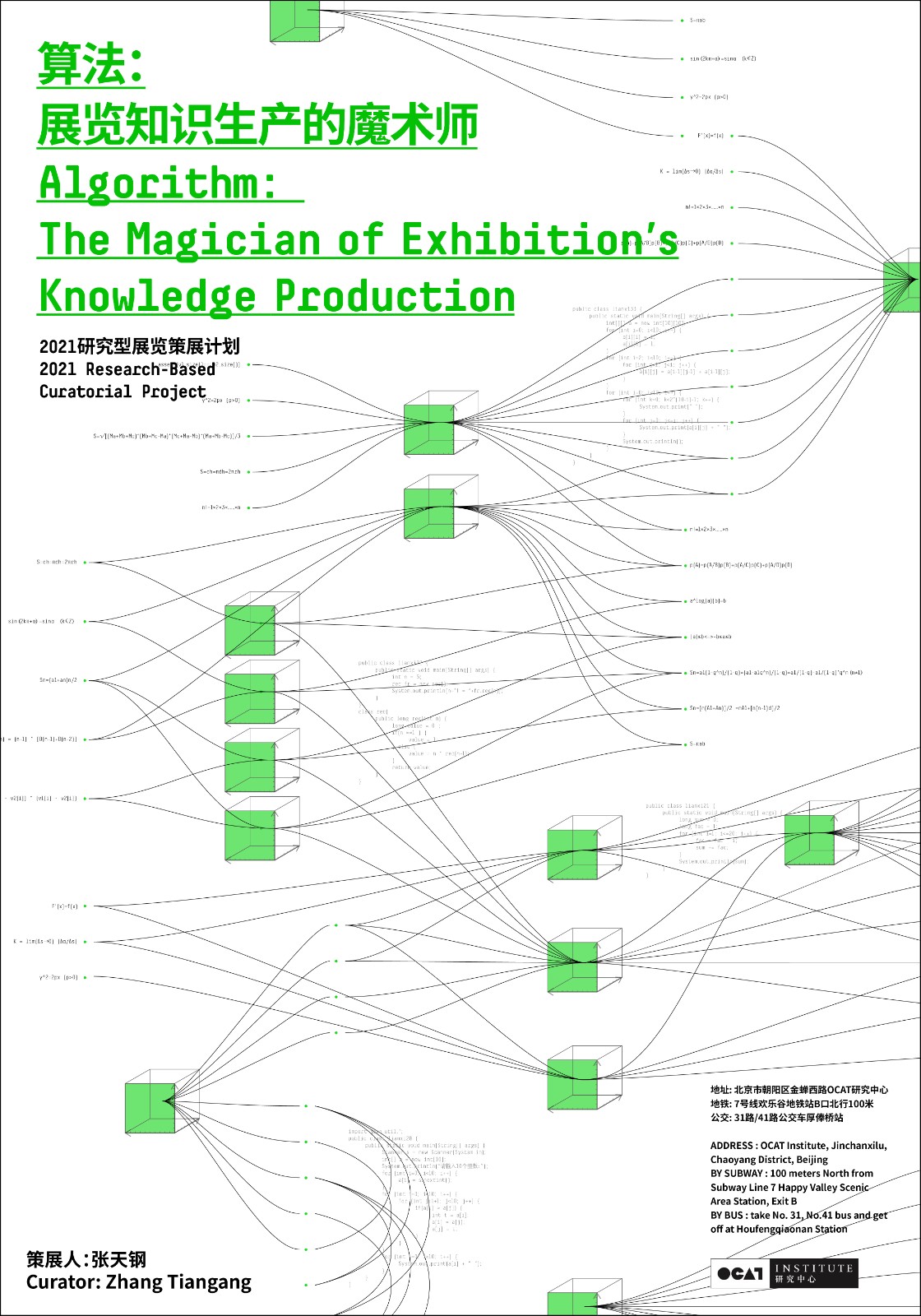
Algorithm: The Magician of Exhibition’s Knowledge Production
Curator: Zhang Tiangang
Martin Heidegger believed that cybernetics is the end of Western metaphysics, because through the feedback loop inside the system, the machine and the organism, the objectivity and the subjectivity will be able to combine. Henry Kissinger also pointed out that artificial intelligence algorithms, like humans, can use recursive methods to study and make outputs from contingencies. Thus, the emergence of artificial intelligence marks the end of "Enlightenment Reasoning," that is, the end of anthropologismus. Artificial intelligence algorithms led to the exploration of new philosophy and epistemology. The Exhibition is a unique form of knowledge production, which is mainly manifested in the process of curating, exhibiting and visiting. With the development of artificial intelligence, new approaches to the aforementioned methods of knowledge production have emerged, which has already become evident in various art and design practices. Algorithm: Magician of Exhibition's Knowledge Production aims to hand part or all of the authority of the exhibition over to the algorithms, then explore the creativity of the algorithms itself; additionally, to break the anthropocentric curatorial and display paradigm and to explore new ways of knowledge production in exhibitions by reorganizing and distributing the relationship structure among curatorial, display, exhibitors, audiences, and the non-human objective world. The issues we need to think about also include the subjectivity of human beings, the subjectivity of algorithms and the ethics of algorithm creation, etc.
The artificial intelligence supported by algorithms is becoming increasingly developed. The development of algorithm technologies such as knowledge discovery, knowledge graphs, cognitive graphs, content curation, algorithmic topic selection, algorithmic decision-making, and image analysis has made algorithmic curation possible. Algorithm-based curatorial practices, such as X Degrees of Separation and Computed Curation, have emerged. In the field of journalism, news curation is a process of topic selecting and activity planning with a curatorial nature. At present, algorithms have been involved in news curation, which has become a new paradigm of practice and been placed in the spotlight. Algorithm curation is the magician of exhibition’s knowledge production: On the one hand, algorithm curation uses data text analysis, data text mining and other methods to produce novel knowledge that is very different from human cognitive methods and experience. On the other hand, algorithm curation is a non-anthropocentric method of knowledge production that transcends human nature (such as Fear of Missing), race, and class. The "Algorithm Curatorial Laboratory" section of the exhibition sorts out and presents the practice and research of algorithm curation on a global scale.
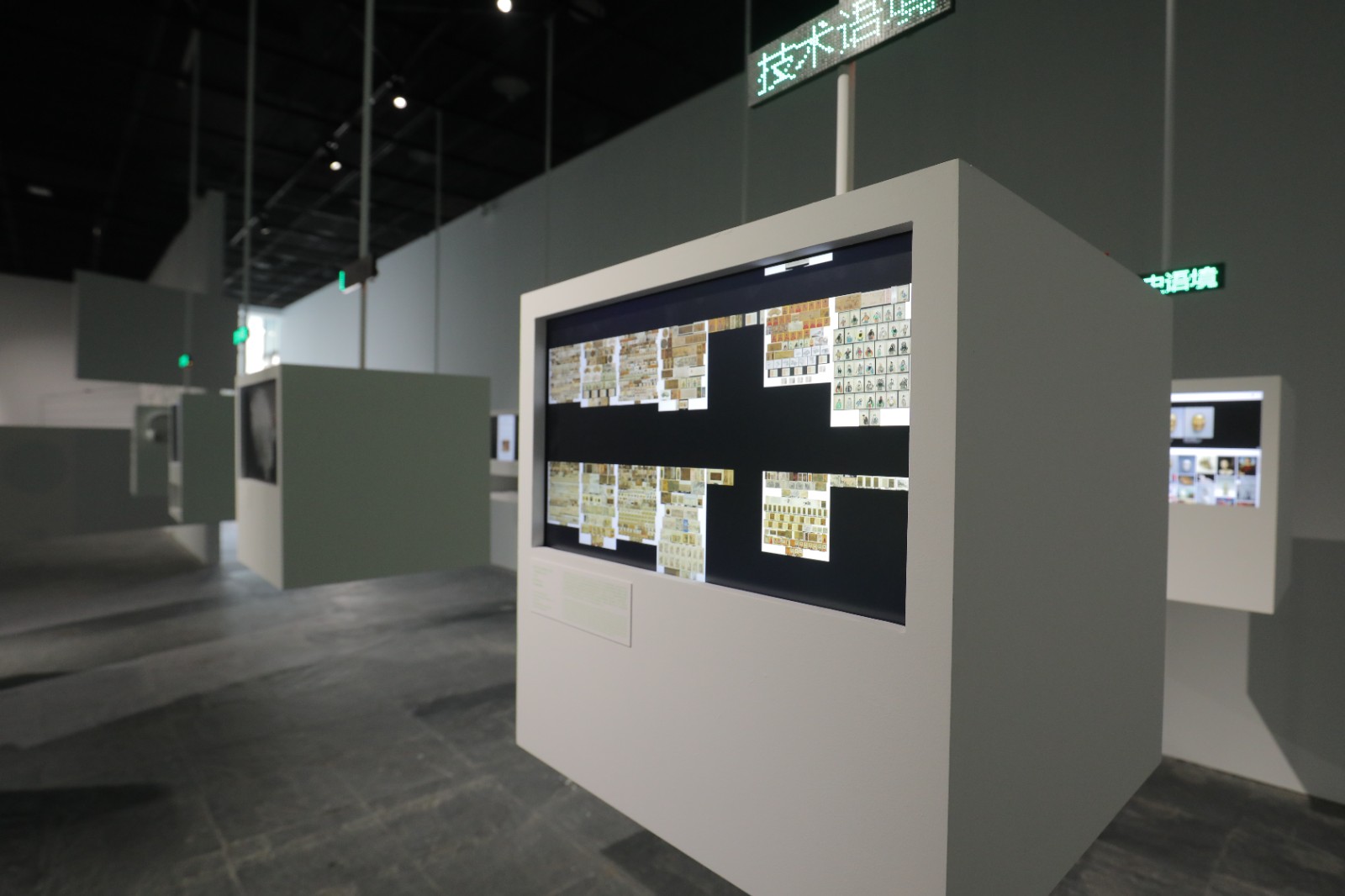
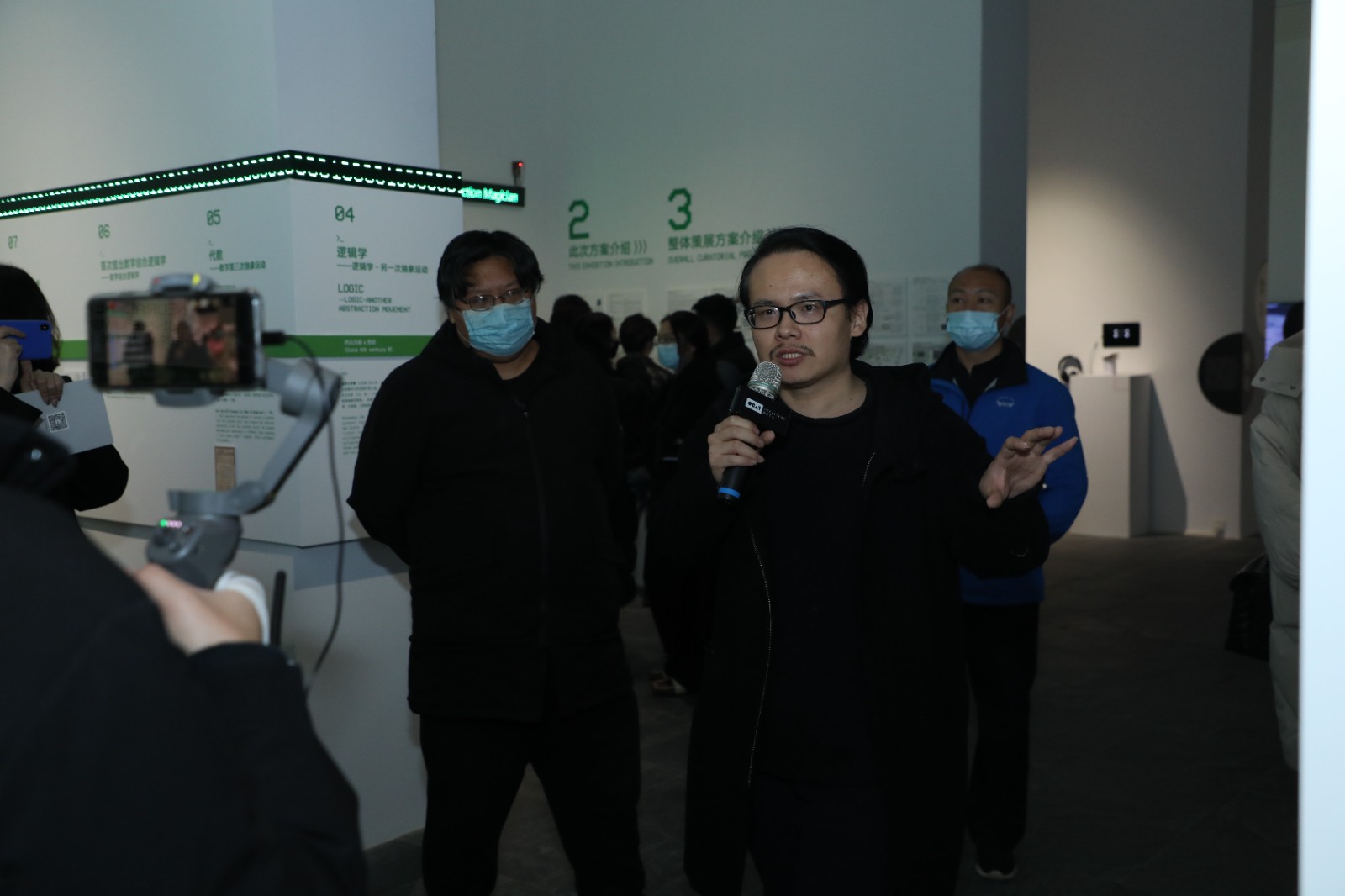 Exhibition View of Algorithm: The Magician of Exhibition’s Knowledge Production
Exhibition View of Algorithm: The Magician of Exhibition’s Knowledge Production
With the application of algorithm in the display of exhibitions, the relationship between people and exhibits is not only that people perceive things, but also that things perceive people. At the same time, the algorithms organize, connect and recommend information and knowledge for audiences with recursive feedback in the interaction with them, generating a process of knowledge production, such as The Dialogue between Data and Art. Algorithms organize information and knowledge for audiences through recursive feedback in a non-anthropocentric way and realize knowledge production. The “Algorithm Display Laboratory” section of the exhibition sorts out and presents the practice and research of algorithm display on a global scale.
Algorithm: The Magician of Exhibition’s Knowledge Production is divided into three sections: “Algorithm Curatorial Laboratory,” “Algorithm Display Laboratory” and “Future Algorithm Exhibition Laboratory.” “Algorithm Curatorial Laboratory” and “Algorithm Display Laboratory” invite designers, artists, scientists, researchers, etc, to participate in the exhibition, to exhibit their works, documents or research results, to sort out and present the practice and research of algorithm curation and algorithm display on a global scale. These two “l(fā)aboratories” apply the multi-armed bandit (MAB) and brain-computer interface technology to realize the algorithm display of the exhibition. “Future Algorithm Exhibition Laboratory" is a practical experimental platform that generates keywords or titles of exhibitions a hundred years from now that is, in 2121, in a de-humanized manner. It explores themes of exhibitions in a hundred years, where algorithm, the public, experts, and the non-human objective world will all be experimenters who send their own texts and data about future exhibitions to the experimental platform. The algorithm calculates these texts and data, and then generates the keywords or titles for the exhibition 100 years later. This section uses algorithms as both a tool and a method to explore the possibility of future exhibitions (themes). The method of presentation of this curatorial project and the participatory and open algorithm system itself are an interpretation of the curatorial concept, so that the audience can experience the value and meaning that algorithms bring to the exhibition during the intervention of the algorithm system, the exhibition content, and the curatorial concept during the exhibition.
 The Opening Ceremony
The Opening Ceremony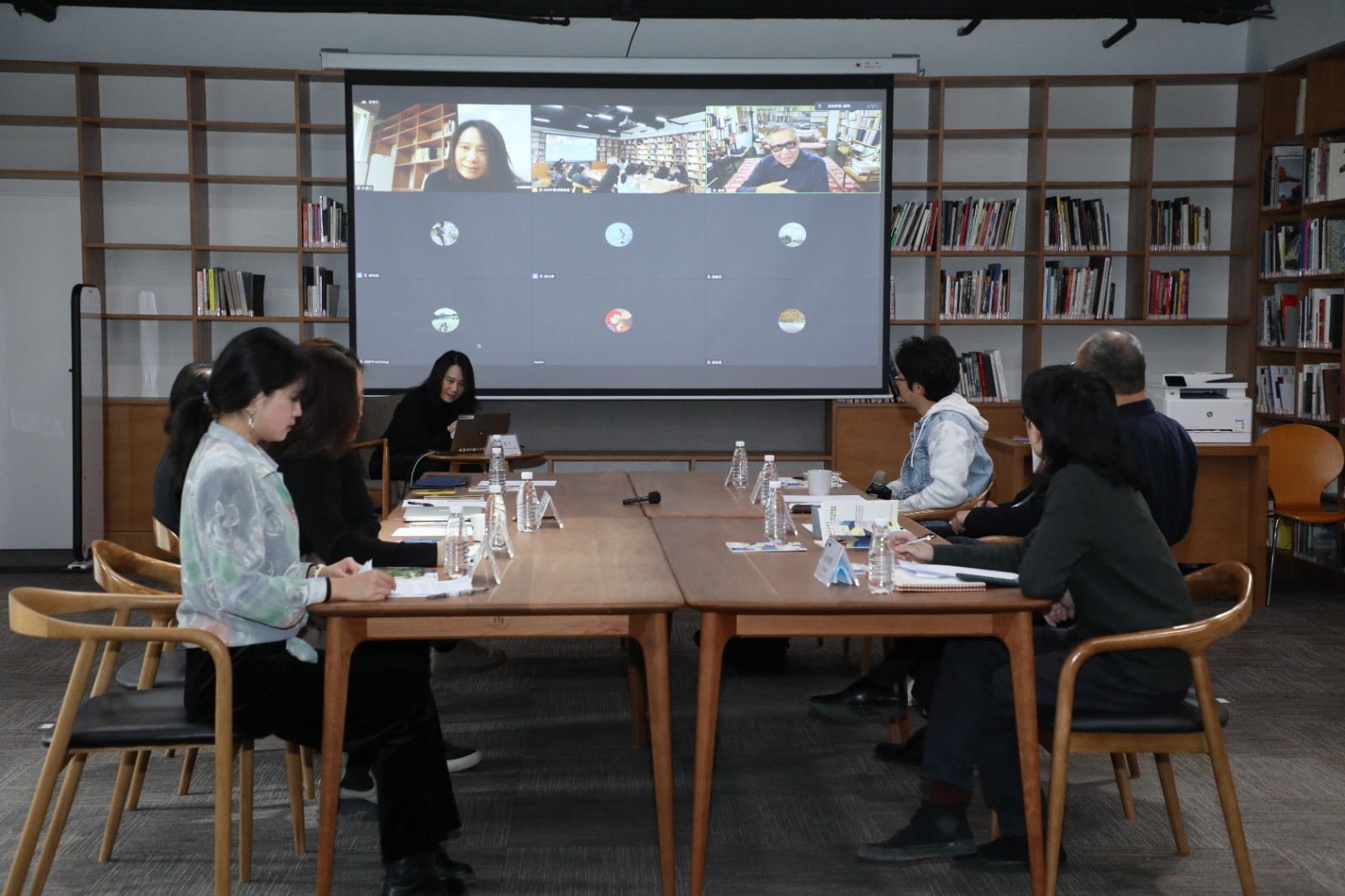 A workshop was held on the opening day.
A workshop was held on the opening day.
Five shortlisted proposals have been exhibited at OCAT Institute since November 28, 2021. Based on the feedback from the guest judges and audiences, a winning proposal will be selected and announced through the official website and the WeChat official account of OCAT Institute after the shortlist exhibition. The winning proposal will be developed into an exhibition, which will open at OCAT Institute in 2022.
About the exhibition

Duration: November 28, 2021–February 20, 2022
Opening: November 28, 2021
Address: OCAT Institute, Jinchanxilu, Dist. Chaoyang, Beijing
Organizer: OCAT Institute
Support: OCT Group Co., Ltd.
Courtesy of OCAT Institute, edited by CAFA ART INFO.




























